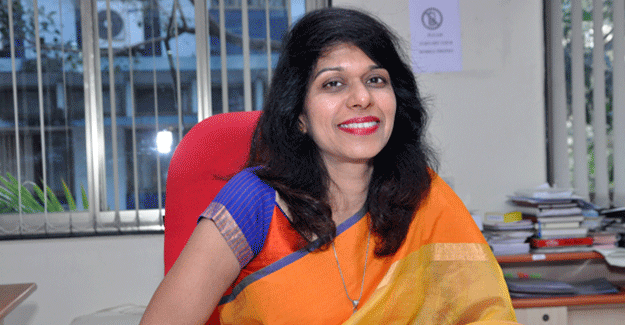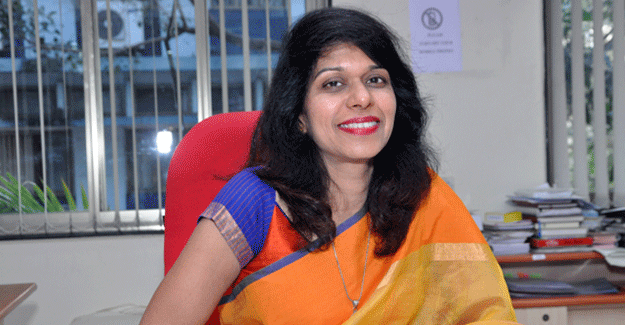
I Urge The Textile Industry In The SME Segment To Also Come Forward To Make Use Of The Current Schemes
She believes in effective execution of projects in close collaboration with the industry. She believes a vibrant textile industry will be able to surpass China and other South Asian competitors. Dr. Kavita Gupta, Textile Commissioner, Govt. of India, is leaving no stone unturned to take Government initiatives to the industry and disseminating the industry's issues to the ministry. In an exclusive interview with Anurima Das, she highlights the government's work - be it in labour reforms, skills development, ATUFS - all aimed at making India a stronger textile player in the global market.
Union Budget 2016 is just a week away. Before we get to see what's in store for textile industry, we would want to know, what were the few points that you had recommended to the government to consider while formulating the budget for the industry?
We have listed several key points for the government to consider through elaborate discussions with the industry partners, stakeholders, govt. departments and industry associations. We wanted to list only those points from our end, which would push the industry to better heights tomorrow. And that can't happen without help from the industry in any way. The few points which I had raised on behalf of my office for the industry are:
1. We have suggested a lowering of the duties both import and excise levies for the manmade and synthetic fibre and filament yarn. We see a great potential for the synthetic textiles in the coming years. Its share in the country's product basket could increase from current 40% due to its application in technical textiles. So, keeping the raw material prices competitive is very important to increase the consumption. This can only happen with lower duty barriers.
2. Reduce the custom duties of textile raw materials where the country depends only on imports. For example, raw materials for viscose fibre where reducing the duties will benefit the industry.
3. To incentivise the textile engineering industry we have suggested that the excise duties on textile machinery be brought down considerably.
Of these proposed suggestions, how positive are you regarding the inclusion of the same within the upcoming budget?
The Prime Minister places a lot of importance to the textile sector and under the 'Make in India' initiative this industry has been marked as a priority sector. Owing to this, we are definitely expecting that some more forward looking measures would be included in the budget with the aim to incentivise and propel the growth of the industry.
Your stint with the labour department of Maharashtra as the Principal Secretary was quite a long chapter. So, what would be your suggestions in this area to improve the balance in the labour laws and industry demands?
Being the Principal Secretary for four long years handling labour department, I am little drawn towards the labour issues. And let me tell you, the labour problems are not really an impending factor, if we look closely. Labour contributes 7-8% to the cost of manufacturing in textile sector. When there are major labour intensive textile hubs like Tirupur bustling and drive the growth of the sector, all under the present labour regulations, why complain? But of course, we can't ignore the fact that this industry is extremely labour intensive there are areas that needs improvement.
Therefore textile ministry is working closely with the ministry of labour. The issues we are trying to resolve at present are: Revising the industrial employment act, so that emphasis can be given on fixed term employment and secondly, we are trying to facilitate night working for women. Thirdly, we want to improve contract employment law, which under the present stringent form is not an easy thing. Thus, we are trying to bring in some reform.
How do you see the Indian textile industry moving ahead in the time to come?
Even though China does not have any advantage of the FTA's and the labour costs in China are also at an all time high, still the country dominates the textile sector. They are dominating with a 35% market share as the leading exporter of textiles. While India is behind them in the second position but our market share is 5% only! This is therefore an extremely crucial time for the Indian textile industry. We have to act urgently and immediately. China, with time, will implement the 'Made by China' initiative; in due course with the Yuan strengthening they will invest in the neighbouring countries. And there too we could see opportunities. Exploiting all such potentials within the global textile industry will take us to a better space in the time to come.
Amended TUFS is now in place. How far do you think the industry is going to benefit from the new policy in the longer run?
TUFS in the past has been one of the successful major key interventions by the government that brought in major technology upgradation within the industry. I have tried to analyse the trend too and interestingly, have found that whenever TUFS was stopped or was going through an unsure period of pause, then the exports by the industry have come down considerably. The policy has definitely been responsible for the betterment of the industry. With ATUFS, we have brought in capital subsidies and that too up to the extent of 15% for the apparel & garments and technical textiles. These being the weak link of the industry so far, we wanted to uplift these sectors especially after identifying the latent potential that these sectors hold in making India reach a new height in global textile market. It's high time that we should begin exporting value added products, to secure the country's due position in the textile global map.
How do you differentiate the workings of ATUFS as compared to TUFS?
ATUFS is more transparent and as its guidelines will be published by mid-March, 2016 the industry will see how easy it will be to apply and avail the subsidies from now on. It will be all operated through a user friendly platform which is already built. From uploading applications to completing every step of the operation from both our side and the user side will be driven by set timelines, leaving no scope for any lag. A departure from the TUFS also means generating a machine code. Every new installation will have a machine generated code, with ready history of the same available at just a click. Also, ATUFS will be a credit linked scheme whose implementation and inspection etc. will be driven by the Textile Commissioner's office to ensure benefits reach the industry. At the same time, sufficient amount has been allocated to compensate the industry for the approved projects under earlier TUF schemes till 13th of January 2016. ATUFS comes with subsidy cap and aimed at covering more industrial units under the MSME sector. ATUFS is definitely an elaborate scheme but the benefits are marginally less as compared to TUFS.
How are the textile cluster's going to benefit from the Amended TUFS?
The Textile Commissioner's Office is not only about TUFS. We have many more policies in place that are solely meant for the clusters to avail. Like the Skill Development Policy. The industry under this scheme cannot only use the government's fund to train the workers but also use the money to buy equipments required to train them. Government has allocated Rs. 10000 per person for training. The economics is quite fruitful for the manufacturer and covers up the training costs and also provides capital for machine purchase. The only condition that the government gives is that 70% of the trained workers are to be absorbed by the industry. Also, we have the powerloom upgradation scheme. Coimbatore is the standing example of how this scheme has benefited the industry. Under this scheme the government offers 50% subsidies on the upgradation cost. This not only increases the productivity but also ensures that the manufacturer optimises and upgrades at a bare minimum cost. Further, the mega cluster development projects are in place covering the textile clusters. I urge the industry to exploit these opportunities to their benefit.
How do you think India can climb higher in the textile value chain to make value added products?
We need to work on several aspects out of which couple of areas are very important. Firstly, we will have to make our value chain integrated up to apparel. When the GST comes in, the integration of the manufacturing chain would be even more essential. Because, embedded duty benefits will not be realised if the chain is broken. Also, integrated manufacturing with economy of scale will help industry to do better. For example, India is doing extremely well in home textiles because this sector is highly integrated. To quote our Prime Minister, we must have 5F (Farm to Factory to Fabric to Fashion to Foreign) approach and achieve a seamless textile manufacturing chain. Secondly, we would have to emphasise on branding, innovation and quality of raw materials. Apart from these, ruralisation of the textile clusters would help. The textile sector has been contributing the maximum to the GDP of the country and the highest employment generating industry. For the government, this industry is a focus sector and our policies are made in such a manner which can propel the industry to new heights.
Message to the Industry
We expect active participation from the industry and I am very optimistic that soon we will have better growth rate in the textile sector than China. We must work hard and work together. Government is committed to provide all possible support. We can improve our market share in global textile trade from present 5% to 15% and in the apparel exports; we can surpass Bangladesh and Vietnam.

Textile Excellence
If you wish to Subscribe to Textile Excellence Print Edition, kindly fill in the below form and we shall get back to you with details.








